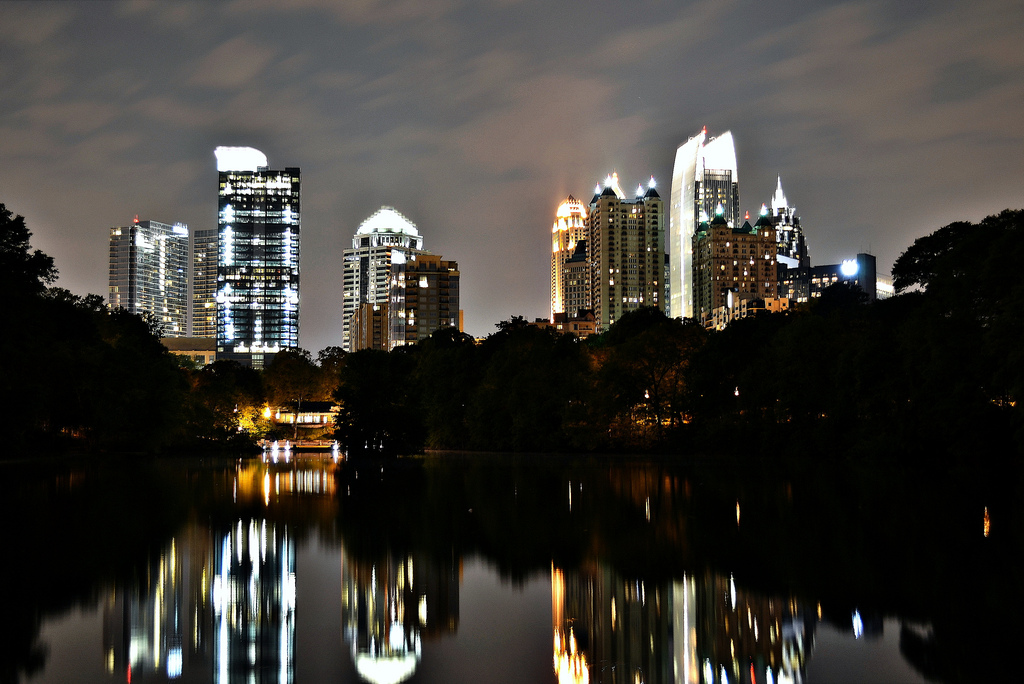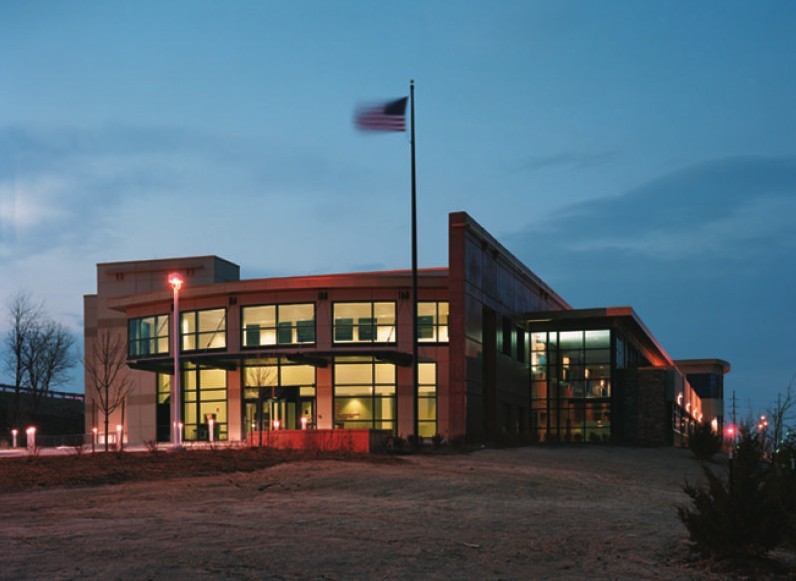|
Ecodistrict
An ecodistrict or eco-district is a neologism associating the terms "district" and "eco" as an abbreviation of ecological. It designates an Urbanism, urban planning aiming to integrate objectives of sustainable development and social equity and reduce the ecological footprint of a neighborhood, urban area, or region. This notion insists on the consideration of the whole environmental issues by way of a collaborative process. In order to design ecodistricts, one needs to completely redesign their energy system plans. The usage of photovoltaic panels and electric vehicles is common. Examples Ecodistricts can be found in metropolises such as : * Stockholm (Hammarby Sjöstad) (Sweden) * Hanover (Germany) * Marseille (Euroméditerranée) (France) * BordeauxGinko (France) * Freiburg im Breisgau (Vauban, Freiburg) (Germany) * Malmö (BO01) (Sweden) * London (BedZED) (United Kingdom) * Grenoble ( De Bonne and Blanche Monier) (France) * Dongtan (China) * EVA Lanxmeer (Netherlands) * ... [...More Info...] [...Related Items...] OR: [Wikipedia] [Google] [Baidu] |
Midtown Atlanta
Midtown Atlanta, or Midtown, is a high-density commercial and residential neighborhood of Atlanta, Georgia. The exact geographical extent of the area is ill-defined due to differing definitions used by the city, residents, and local business groups. However, the commercial core of the area is anchored by a series of high-rise office buildings, condominiums, hotels, and high-end retail along Peachtree Street between North Avenue and 17th Street. Midtown, situated between Downtown to the south and Buckhead to the north, is the second-largest business district in Metro Atlanta. In 2011, Midtown had a resident population of 41,681 and a business population of 81,418. Midtown has the highest density of art and cultural institutions in the Southeast, notably including the Fox Theatre, Woodruff Arts Center, the High Museum of Art, the Center for Puppetry Arts, the Atlanta Symphony Orchestra, and the Museum of Design Atlanta. Midtown attracts more than 6 million visitors annual ... [...More Info...] [...Related Items...] OR: [Wikipedia] [Google] [Baidu] |
Euroméditerranée
Euroméditerranée () is an urban renewal project underway in Marseille to create an ecodistrict in the neighbourhood of La Joliette. The project was launched in 1995 with the initiative of Mayor Robert Vigouroux Robert Vigouroux (21 March 1923 – 9 July 2017) was a French politician and writer. He was the Mayor of Marseille (the second largest city in France) from 1986 to 1995, and a French Senator for the Bouches-du-Rhone from 1989 to 1998.'Municipa ... and the State. The agreement for the establishment of a public agency of development was signed in 1994, working on an area of 310 hectares. Since 2007, Euroméditerranée Act 2 has extended the scope to 170 new hectares north. This project is funded by the European Union, the State, the Regional Council, the Departmental Council, the urban community and the City of Marseille. The Euroméditerranée eco-district is home to the Thassalia project, Europe’s first geothermal marine power station, which uses the waters of t ... [...More Info...] [...Related Items...] OR: [Wikipedia] [Google] [Baidu] |
Neologism
A neologism Greek νέο- ''néo''(="new") and λόγος /''lógos'' meaning "speech, utterance"] is a relatively recent or isolated term, word, or phrase that may be in the process of entering common use, but that has not been fully accepted into mainstream language. Neologisms are often driven by changes in culture and technology. In the process of language formation, neologisms are more mature than '' protologisms''. A word whose development stage is between that of the protologism (freshly coined) and neologism (new word) is a ''prelogism''. Popular examples of neologisms can be found in science, fiction (notably science fiction), films and television, branding, literature, jargon, cant, linguistics, the visual arts, and popular culture. Former examples include ''laser'' (1960) from Light Amplification by Stimulated Emission of Radiation; ''robot'' (1941) from Czech writer Karel Čapek's play ''R.U.R. (Rossum's Universal Robots)''; and ''agitprop'' (1930) (a portmanteau of " ... [...More Info...] [...Related Items...] OR: [Wikipedia] [Google] [Baidu] |
Grenoble
lat, Gratianopolis , commune status = Prefecture and commune , image = Panorama grenoble.png , image size = , caption = From upper left: Panorama of the city, Grenoble’s cable cars, place Saint-André, jardin de ville, banks of the Isère , arrondissement = Grenoble , canton = Grenoble-1, 2, 3 and 4 , INSEE = 38185 , postal code = 38000, 38100 , mayor = Éric Piolle , term = 2020–2026 , party = EELV , image flag = Flag of Grenoble.svg , image coat of arms = Coat of Arms of Grenoble.svg , intercommunality = Grenoble-Alpes Métropole , coordinates = , elevation min m = 212 , elevation m = 398 , elevation max m = 500 , area km2 = 18.13 , population = , population date = , population footnotes = , urban pop = 451096 , urban area km2 = 358.1 , u ... [...More Info...] [...Related Items...] OR: [Wikipedia] [Google] [Baidu] |
Green Retrofit
A green retrofit is any refurbishment of an existing building that aims to reduce the carbon emissions and environmental impact of the building. This can include improving the energy efficiency of the HVAC and other mechanical systems, increasing the quality of insulation in the building envelope, implementing sustainable energy generation, and aiming to improve occupant comfort and health. Green retrofits have become increasingly prominent with their inclusion in a number of building rating systems, such as the USGBC's LEED for Existing Buildings: Operations & Maintenance, Passive House EnerPHit, and Green Globes for Existing Buildings. Some governments offer funding towards green retrofits as existing buildings make up a majority of operational buildings and have been identified as a growing area of consideration in the fight against climate change. Overview Most retrofits can be considered somewhat "green" because rather than constructing a new building, an existing one ... [...More Info...] [...Related Items...] OR: [Wikipedia] [Google] [Baidu] |
Green Building
Green building (also known as green construction or sustainable building) refers to both a structure and the application of processes that are environmentally responsible and resource-efficient throughout a building's life-cycle: from planning to design, construction, operation, maintenance, renovation, and demolition. This requires close cooperation of the contractor, the architects, the engineers, and the client at all project stages.Yan Ji and Stellios Plainiotis (2006): Design for Sustainability. Beijing: China Architecture and Building Press. The Green Building practice expands and complements the classical building design concerns of economy, utility, durability, and comfort. Green building also refers to saving resources to the maximum extent, including energy saving, land saving, water saving, material saving, etc., during the whole life cycle of the building, protecting the environment and reducing pollution, providing people with healthy, comfortable and efficient u ... [...More Info...] [...Related Items...] OR: [Wikipedia] [Google] [Baidu] |
Ecovillage
An ecovillage is a traditional or intentional community with the goal of becoming more socially, culturally, economically, and/or ecologically sustainable. An ecovillage strives to produce the least possible negative impact on the natural environment through intentional physical design and resident behavior choices. It is consciously designed through locally owned, participatory processes to regenerate and restore its social and natural environments. Most range from a population of 50 to 250 individuals, although some are smaller, and traditional ecovillages are often much larger. Larger ecovillages often exist as networks of smaller sub-communities. Some ecovillages have grown through like-minded individuals, families, or other small groups—who are not members, at least at the outset—settling on the ecovillage's periphery and participating ''de facto'' in the community. Ecovillagers are united by shared ecological, social-economic and cultural-spiritual values.Van Schynd ... [...More Info...] [...Related Items...] OR: [Wikipedia] [Google] [Baidu] |
Ecological Debt
Ecological debt refers to the supposed accumulation of debt of the Global North to Global South countries, due to the net sum of historical environmental injustice, especially through resource exploitation, habitat degradation, and pollution by waste discharge. The concept was coined by Global Southerner non-governmental organizations in the 1990s and its definition has varied over the years, in several attempts of greater specification. Within the ecological debt broad definition, there are two main aspects: the ecological damage caused over time by a country in one or other countries or to ecosystems beyond national jurisdiction through its production and consumption patterns; and the exploitation or use of ecosystems over time by a country at the expense of the equitable rights to these ecosystems by other countries. History The term 'ecological debt' first appeared on paper in 1985, in a yellow booklet with the title “Women in movement" made by the German ecofeminist E ... [...More Info...] [...Related Items...] OR: [Wikipedia] [Google] [Baidu] |
Ecological Footprint
The ecological footprint is a method promoted by the Global Footprint Network to measure human demand on natural capital, i.e. the quantity of nature it takes to support people or an economy. It tracks this demand through an ecological accounting system. The accounts contrast the biologically productive area people use for their consumption to the biologically productive area available within a region or the world (biocapacity, the productive area that can regenerate what people demand from nature). In short, it is a measure of human impact on the environment. Footprint and biocapacity can be compared at the individual, regional, national or global scale. Both footprint and biocapacity change every year with number of people, per person consumption, efficiency of production, and productivity of ecosystems. At a global scale, footprint assessments show how big humanity's demand is compared to what Earth can renew. Global Footprint Network estimates that, as of 2014, humanity has ... [...More Info...] [...Related Items...] OR: [Wikipedia] [Google] [Baidu] |
Etna, Pennsylvania
Etna is a Borough A borough is an administrative division in various English-speaking countries. In principle, the term ''borough'' designates a self-governing walled town, although in practice, official use of the term varies widely. History In the Middle Ag ... of Allegheny County, Pennsylvania, Allegheny County, Pennsylvania, across the Allegheny River from Pittsburgh. In 2019 Etna was recognized as the first ever Ecodistrict. Etna was named after the volcano Mount Etna, an allusion to blast furnaces, steel mills, galvanized pipe, galvanized-pipe works, and other manufacturers located there. Historically it was a steel town with a blue collar community. The Isabella Furnace (Carnegie Steel), Isabella Furnace of Carnegie Steel was located in Etna, operating until 1953. In 1900, 5,384 people lived in Etna. In 1940, 7,223 lived there. The population was 3,437 at the 2020 United States Census, 2020 census.https://data.census.gov/all?q=Etna+borough,+Pennsylvania Geography ... [...More Info...] [...Related Items...] OR: [Wikipedia] [Google] [Baidu] |
Amsterdam-Noord
Amsterdam-Noord (; ) is a borough of Amsterdam, Netherlands with a population of about 90,000. The IJ, the body of water which separates it from Amsterdam-Centrum and the rest of the city, is situated southwest of Amsterdam-Noord. The borough, which has an area of 49.01 km2 (18.92 square miles), borders the municipalities of Zaanstad, Oostzaan, Landsmeer and Waterland to the north, all part of the province of North Holland like Amsterdam. It borders the Markermeer to the east. Amsterdam-Noord is mostly home to families who prefer it to the expensive, touristy and crowded Centrum, West and Zuid boroughs. It remains geographically close to major city landmarks, including Amsterdam Centraal station, the Royal Palace and the Rokin. Amsterdam-Noord is best known for its typical wooden houses (mainly located in Schellingwoude and Nieuwendam), historical areas with a low population density (Landelijk Noord) and large open spaces (especially Durgerdam and Ransdorp). History Backgrou ... [...More Info...] [...Related Items...] OR: [Wikipedia] [Google] [Baidu] |








